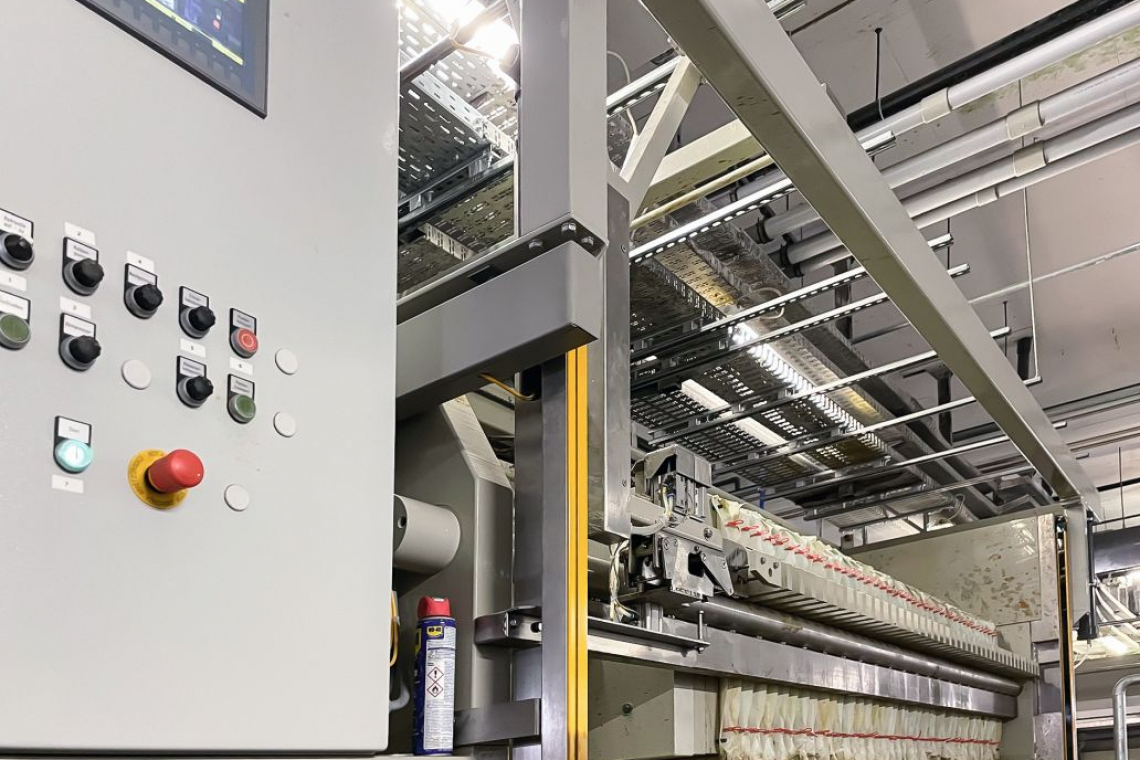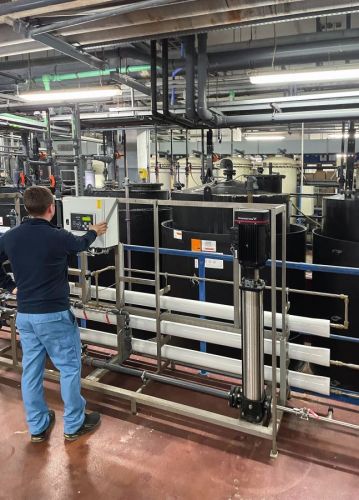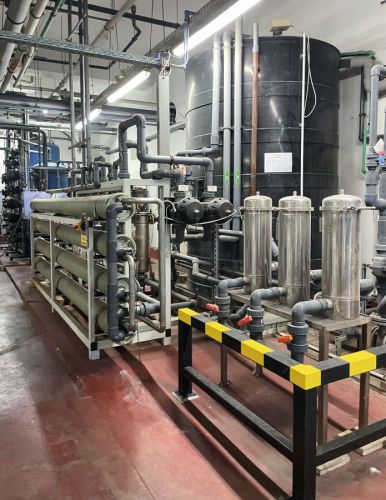Saxonia Galvanik in Halsbrücke, Saxony, is one of the largest plastic metallizers in Germany and internationally. The company recently described the environmental challenges it faces and the environmental technology solutions it uses on the social business platform LinkedIn.
I'm going down to the cellar - yes, you hear that from time to time at Saxonia Galvanik, reports a Saxonia employee on LinkedIn. The basement, or rather the neutralization area, is where the wastewater treatment is located. Since 1995, this has played a major role in environmental protection, which is of great importance to the company. 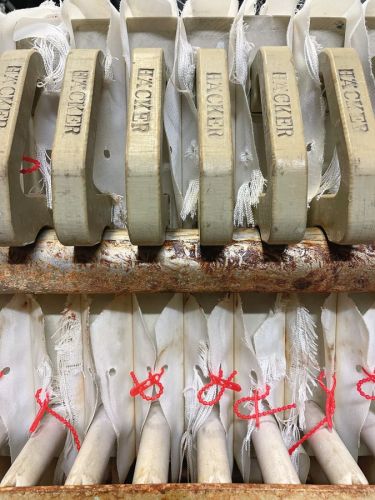 company.
company.
With around 300 employees, the electroplating department electroplates for automotive customers such as Audi, BMW and Porsche, but also for household appliance manufacturers and customers from the sanitary sector. In its wastewater treatment plant, it not only treats wastewater from its own production processes, but also - for historical reasons - for all other companies at the Halsbrücke site.
5 tons of chemicals for 500m3 of process water per day
This requires large quantities of chemicals: the company uses around five tons of chemicals every day to treat the production water. These quantities of chemicals are therefore not only delivered in framed bulk containers, known as IBCs, but sometimes by tanker. Using, for example, caustic soda, hydrochloric acid, hydrogen peroxide, sodium bisulphite and hydrated lime, mainly rinsing water from the rinsing tanks is treated. The treatment of up to 500m3 of water per day is not unusual, according to the post on LinkedIn. For comparison: with 500m3 of water, a person can shower extensively every day for 27 years. After treatment, the water is transported via a long network of pipes from the production facilities to the nearest sewage treatment plant - a distance of around ten kilometers.
How wastewater treatment works
Chemicals are needed to neutralize chemicals. The electroplating experts from Halsbrücke, located near the metalworking stronghold of Freiberg, don't beat about the bush. "And how does that work?" Waste water is categorized and collected in containers "in the cellar". These are treated separately, as different processes are used, including ion exchange, reverse osmosis and UV oxidation, as well as different chemicals and pH values. The waste water at Saxonia Galvanik is divided into four main categories and thus four different treatment methods: acidic water, cyanide water, electroless nickel, chromium(VI) and trichrome.
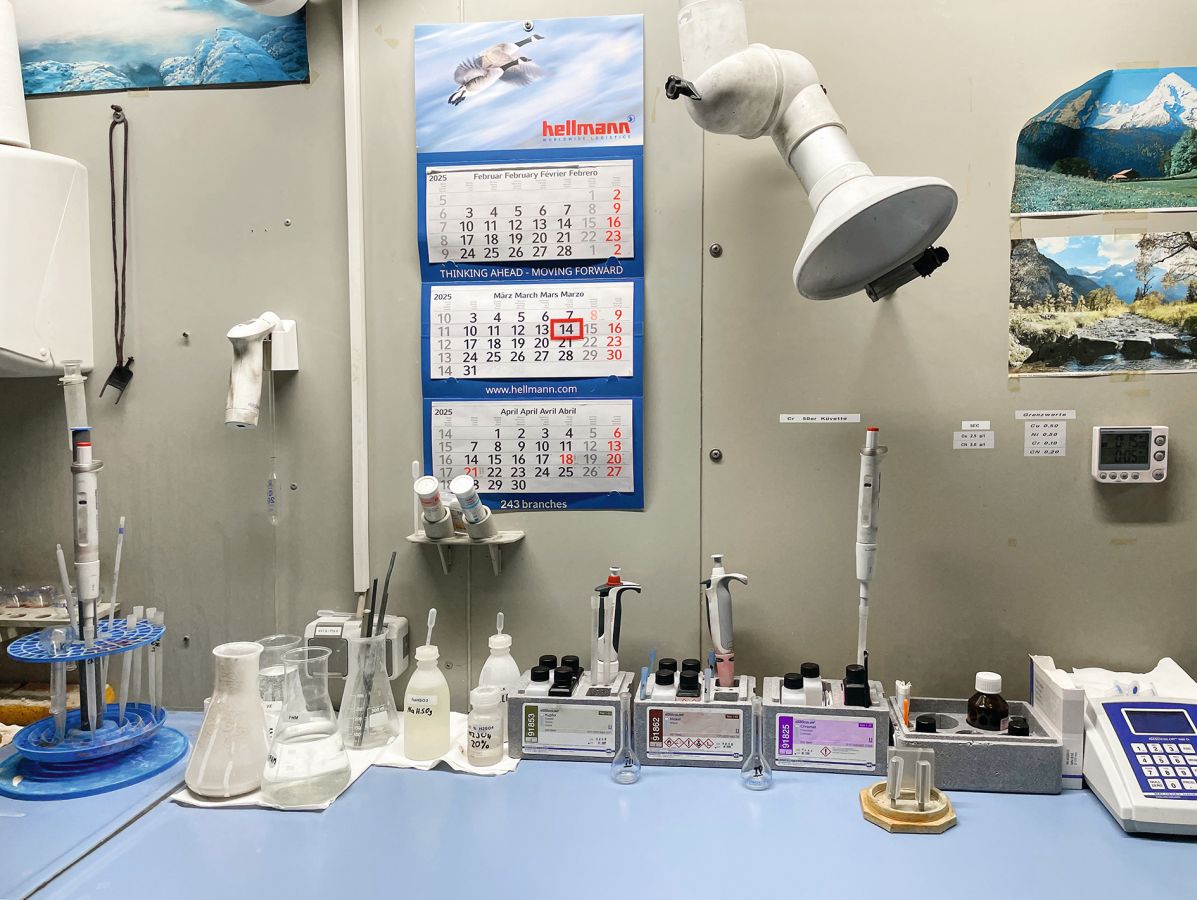 Laboratory for the waste water plant
Laboratory for the waste water plant
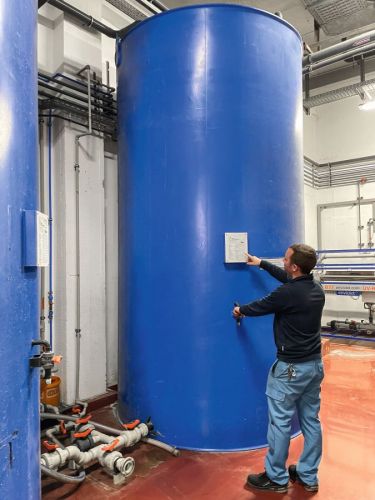 Employees in front of a tank, UV oxidation in the background
Employees in front of a tank, UV oxidation in the background
Metal recovery and PFAS removal
If the processes work, fresh water as well as metals such as copper and nickel and precious metals such as palladium and silver are recovered. The special feature: nickel can be immediately reused in the processes in the form of dissolved nickel sulphate. For the other metals and precious metals, cooperation with specialized disposal companies is required to return the metals to the raw material cycle. Perfluorinated and polyfluorinated alkyl substances (PFAS) have also been filtered out of the waste water in Halsbrücke for a long time. Ion exchangers that use resins for the filtration process are used for this purpose.
Return to the water cycle
The result is impressive and shows how efficiently and environmentally friendly electroplating plants can work in this country: According to the company, if the treated water is passed on to the sewage treatment plant, the measured values are often 100 times lower than the required legal limits. The water is therefore harmless and can be returned to the natural water cycle after treatment in the sewage treatment plant, where organic matter and salts are removed.

